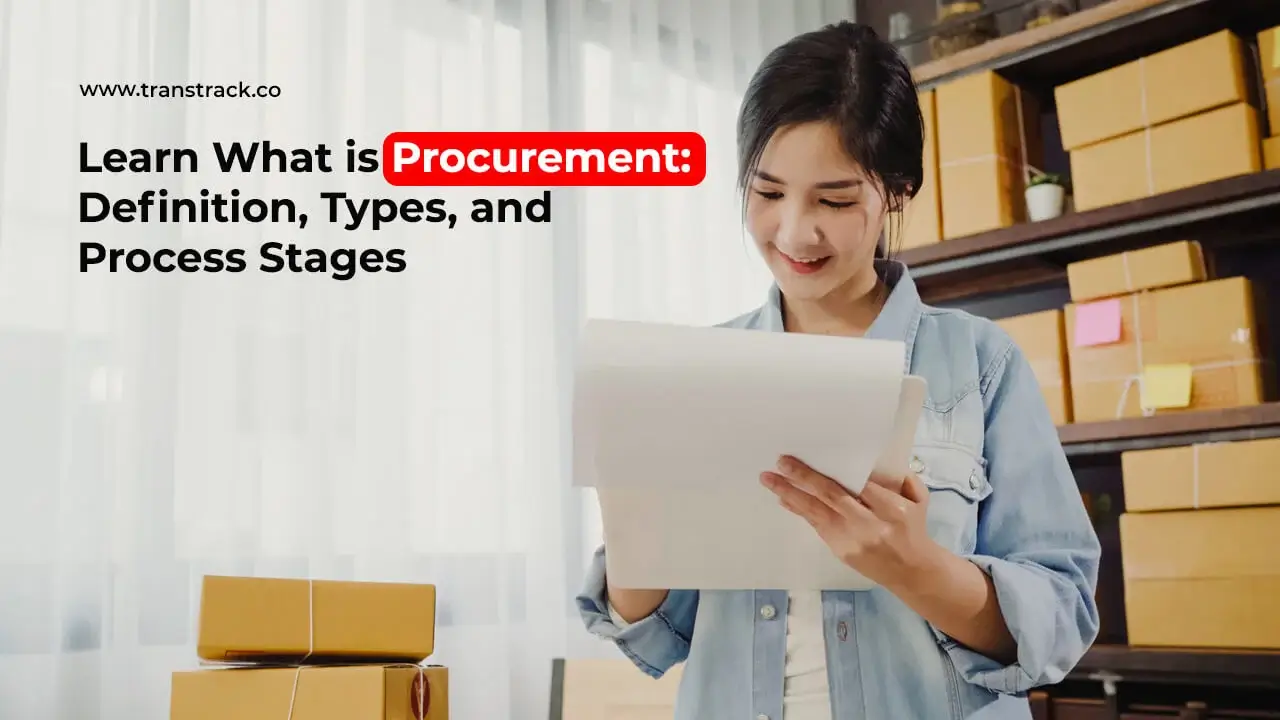Learn What is Procurement: Definition, Types, and Process Stages

Procurement is an important activity in maintaining the continuity of a company’s operations. Without this process, the company will have difficulty in meeting its needs, both internal needs and needs for customers.
In this process, it should not be done carelessly, there are several considerations and stages so that this process runs smoothly. This process also consists of several types. It requires careful analysis to determine what type of this process is needed.
Want to know how important the function of this process is in a business or company? Let’s take a look at the following article TransTRACK!
What is Procurement?
Procurement is a process of procuring goods and services that is generally carried out by companies or agencies to obtain certain goods or services. In a business context, this process has an important role in maintaining operational continuity. In simple terms, this process involves a series of steps to obtain goods or services efficiently, effectively, and according to needs.
This process must be well planned, in order to get maximum results. Mistakes in planning this process can result in losses to the company.
Types of Procurement
There are various types of this process that can be implemented, each with different characteristics and processes. Here are some of the commonly used types of this process:
Direct Procurement
Direct procurement is the process of acquiring goods or services that are directly related to the production of goods or the provision of a company’s core services. The main focus is on aspects that have a direct impact on the products or services produced.
Examples of direct procurement are the procurement of raw materials, machine components, or retail goods for resale.
Indirect Procurement
Indirect procurement involves the acquisition of goods or services that are not directly involved in the production of core business goods or services. This type of process is in the nature of supporting the operational and administrative activities of the company. It involves aspects that are general in nature and do not directly affect the products or services produced by the company.
Some examples of this process are: office stationery procurement, air conditioning repair, and furniture procurement.
Goods Procurement
The most common and basic type of this process is goods procurement. This involves acquiring physical products, such as raw materials, components, or finished products. Procurement is often related to supply chains and strategies to ensure the availability of materials needed for production or sales.
Although closely related to the need for physical goods, software procurement can also fall under this process.
Services Procurement
Unlike goods procurement, this process focuses more on acquiring services. This could include consulting, maintenance, upkeep, or information technology services. Procuring services often requires evaluating the skills, experience and reliability of the service provider.
Leasing a car, calling a handyman, hiring marketing services are examples of services procurement.
Process in Procurement
This process involves several stages that are important to ensure the company acquires the necessary goods or services efficiently and effectively. These stages can be explained as follows:
Needs Analysis
The first step in this process is to analyze the needs of the company. The analysis process is generally carried out by the company division in charge of submitting the desired needs to the procurement. The needs analysis is done to avoid unnecessary expenses and ensure that the proposed goods or services are really needed.
Approval
After analyzing, the next process is approval from management. Not all details of the needs submitted by each division will be approved directly. Approval by the management team allows the company to procure goods or services.
Supplier Selection
The next step in the process is the selection of suppliers using Request for Quotation (RFQ). This stage involves price and contract negotiations with the selected supplier. This process is important for building good relationships with suppliers and ensuring the company gets competitive prices.
Purchasing
Once the contract is signed, the next step is the purchasing process. This involves creating a purchase order (PO) document to the supplier or vendor. This PO document contains information about what goods or services will be purchased. All goods or services received will refer to the PO document.
Receiving and Checking
At this stage, the goods or services received will be checked for conformity with the information in the previous PO document. The process at this stage must be carried out thoroughly to ensure that there is no damage or shortage of goods or services.
Post Procurement Evaluation
Once completed, the post-procurement evaluation stage is important to understand the performance of the process. This involves reviewing the entire process to identify potential improvements and efficiencies. Reporting on the results of this process will be provided to the parties involved, including management and the procuring party for evaluation.
In the ever-evolving business world, procurement plays a key role in maintaining smooth operations. By understanding what procurement is, its types, and the processes involved, companies can take the right steps to ensure efficient and effective acquisition of goods or services.
To optimize this process in a business or company, utilizing Fleet Management System (FMS) technology from TransTRACK will be very helpful. Fleet Management System is a technology solution designed to monitor and manage a company’s fleet of vehicles. When integrated with the procurement process, FMS can optimize various aspects of procuring goods or services.
The application of Fleet Management System in procurement activities can bring great benefits to improve efficiency, transparency, and control over the entire supply chain. Find out more about this FMS information by contacting TransTRACK.
Hopefully this article is useful and provides a deeper insight into procurement in a business context.
Topic





